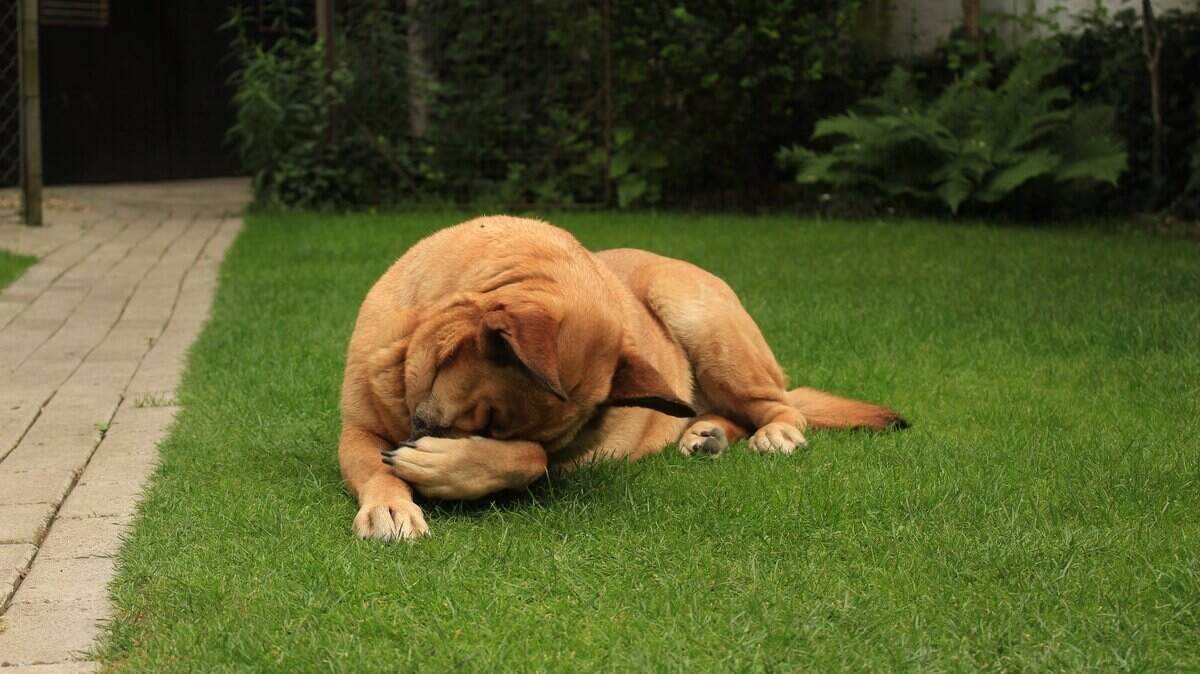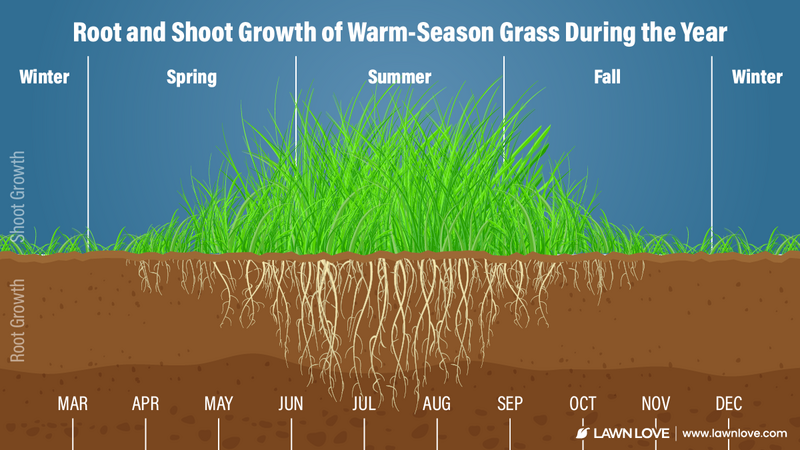
Anyone who’s been through a flea infestation knows how unsettling and uncomfortable it can be. Instead of taking action after the unwelcome visitors have already set up camp, follow these six steps on how to prevent fleas in your yard — before they even arrive.
We’ll cover lawn care practices, pest control, and how to protect your home’s exterior. Find out how to stop your flea problem at the source.
What are fleas?

Fleas are parasitic insects that feed on mammals’ blood. The most common type is the “cat flea” which, despite its name, doesn’t discriminate when it comes to dinner: It can feed on cats, dogs, and humans. Their itchy bites can cause hair loss and irritated skin. Not to mention, they can carry tapeworms and make your pets more susceptible to allergies and disease. One flea can produce 800 eggs in their lifetime!
What attracts fleas to your yard?
- A shady and moist habitat
- Stray animals and pests
- Places to hide
Six simple tips to preventing fleas in your lawn
1. Keep your lawn trim
Fleas and vampires have at least one thing in common: They hate the sun. Why? Because the sun can dry out flea larvae. Regular mowing exposes their shady hiding spots and makes your lawn a less desirable home.
On the flipside, mowing too short can injure your grass and discourage spiders and ants. You might be thinking fewer spiders and ants is a good thing, but they’re helpful predators for fleas and can stop a population from spreading.
Each grass type has a specific recommended mowing height. Stick to the lower end during the grass’s active growing seasons (late fall for cool-season turfgrasses and late spring for warm-season grass types) to encourage growth and the higher end before and after.


| Grass type | Mowing height | Mowing frequency |
| Perennial ryegrass | 2”-2.5” | 7 to 10 days |
| Kentucky bluegrass | 2.5”-3.5” | 10 to 14 days |
| Tall fescue | 2.5”-3.5” | 10 to 14 days |
| Fine fescue | 1.5”-2.5” | 14 to 21 days |
| Bermudagrass | 1.5”-2.5” | 7 days |
| St. Augustinegrass | 2.5”-4” | 7 days |
| Centipedegrass | 1”-2.5” | 10 to 14 days |
| Zoysiagrass | 1”-2.5” | 14 to 21 days |
2. Avoid overwatering
Ever heard of “too much of a good thing?” Overwatering is an easy mistake to make, but it’s important to correct it if you want a healthy lawn. Puddles may be fun to play in, but they’re breeding grounds for fungal disease and, you guessed it, fleas.
Signs you’re overwatering
- Look around for pooling water or runoff on your driveways and sidewalks.
- Walk on your grass a few hours after watering. Squishy texture means there’s too much water.
- An abundance of weeds, mushrooms, or signs of fungal disease can mean you should water less.
Reasons you could be overwatering
- You’re not adjusting to the season or accounting for rain. Grass needs about half as much water when it’s not in its growing season.
- Your drainage system isn’t functioning properly. This is especially important if your house is at the bottom of a hill or your yard contains slopes.
- Your sprinkler system needs an audit. Damaged heads can lead to puddles.
- You’re watering at night instead of before 8 a.m.
How much water is enough?
The rule of thumb for turfgrass is an inch of water per week during the growing season. To determine how long to leave your sprinklers on to produce that amount, place six empty tuna cans around your yard. Calculate the average water depth in the tuna cans after running your sprinklers for 15 minutes. See the chart below for interpreting your results.
| Average water depth after 15 minutes | Total time needed to water 1 inch |
| ⅛ inch | 120 minutes |
| ¼ inch | 60 minutes |
| ½ inch | 30 minutes |
| ¾ inch | 20 minutes |
| 1 inch | 15 minutes |
Pro Tip: In addition to knowing your grass type, it’s good to know your soil type too. Grab a handful of damp soil and rub some between your fingers. If it feels gritty, it’s mostly sand; if it feels slimy, it’s mostly clay. If it feels like both, it’s silt.
Follow regular watering advice for silt (deep but infrequent sessions). Sandy soils lose moisture quickly and need to be watered frequently in short bursts. Clay soils have trouble absorbing water and need long sprinkler sessions at low rates.
Signs of underwatering
Once you adjust your watering schedule, monitor for signs of underwatering. Wilting leaf blades and yellowish or dull color can be your grass’s way of telling you it’s thirsty. If you’re really curious, push a screwdriver into the ground. It should easily go in 6-8 inches if the soil is moist.
3. Take care of debris
We’ve established that fleas like their privacy. To prevent them from establishing a home, do a thorough check of your landscape for anywhere they might like to hang out.
Pick up any other materials around your lawn like toys, forgotten furniture, and lawn equipment. To help prevent fleas from entering your home, you can create a “flea-free zone.” That’s a 6-18” wide barrier around the perimeter of your house empty of debris, plantings, and anything else but soil.
If you’ve dethatched recently, use a rake to collect any leaves, twigs, and branches. Bag everything after.
If you haven’t dethatched recently, you’ll be spending a little more time with your rake. You also can use a dethatching rake, power rake, or a vertical mower (also called a verticutter). Usually, you can rent one of these from a garden store or equipment rental store.
What is dethatching?

Thatch is the buildup of dead material that forms a layer between the growing grass and the soil beneath. A little bit is fine and can even make your lawn more resilient to traffic. More than 1 inch of thatch, though, restricts the movement of air, water, and nutrients, and is a perfect place for a flea to start a family.
Kentucky bluegrass, bermudagrass, and creeping fescues are prone to thatch buildup. Dethatch cool-season grasses in late summer or early fall. Dethatch warm-season grasses after they green up in spring. Active growing will help your turf recover. Always give your lawn a good watering right after dethatching.
4. Discourage pests
Rodents, raccoons, and stray animals are the biggest reason fleas end up in your yard. If you really want to prevent fleas, do everything you can to discourage animals from entering your property.
Don’t leave food outside, and contain all trash with a tight lid. If you feed your pets outside sometimes, bring in the bowl when they’re done and clean the area where they ate.
Your next step is to seal up any holes. Did you know mice can squeeze through a hole the size of a nickel? For small holes, plug the hole with steel wool and use caulk to keep it in place. Lath screen, lath metal, cement, hardware cloth, and metal sheeting can be used for large holes.
Where to look for holes on your home’s exterior:
- In the roof around the rafters and eaves.
- Around doors and windows.
- Near attic or crawl space vents.
- Where electrical, plumbing, cable, and gas lines feed into your house.
- Around the foundation.
What is Integrated Pest Management?
Integrated Pest Management (IPM) is an environmentally conscious means of pest control that uses the smallest amount of chemicals possible.
IPM steps to take:
- Seal up holes and clean debris
- Set traps
- Move trash cans away from building entrances
- Regularly inspect suspect areas (crawl spaces, sheds, basements)
Once non-chemical options are exhausted, you may need to apply a rodenticide. Always follow proper cleanup procedures to keep yourself safe. Protective gear and good ventilation are essential.
5. Keep furry friends clean and flea-free
It’s not just pests that can be a problem; our beloved pets are also susceptible to fleas. Taking a few steps to keep them clean can also keep them flea-free.
We know bath time isn’t always your animal’s favorite, but a weekly wash is a good idea. Feel free to scrub with your regular dog shampoo and leave it on for 1-2 minutes. This will smother any fleas on their coat.
Bonus points: If you can get your pet to sit down in the water for a minute, you’ll drown any fleas around their tail.
If you want to go the extra mile, try a rosemary rinse. Boil a teaspoon of rosemary leaves in water and steep for 10 minutes, wait for it to cool, and use it as the last step in your pet’s wash routine.
You wouldn’t want your pet getting into a dirty bed once they’re clean, so be sure to give them pet bedding, cloth toys, and any rugs or blankets they frequent a wash as well. Once Fido is dry, apply an Insect Growth Regulator topical flea treatment. These treatments disrupt the flea life cycle before flea eggs can turn into adult fleas and are totally safe for pets.
You’ll need to apply spot-on treatments, usually once a month. They’re smelly, but they kill existing fleas on your pet’s coat and help to prevent ticks, heartworms, and other parasites. Flea collars are another easy option.
6. Secret weapon: Spread cedar chips
We like it enough to put it in candles, but did you know fleas can’t stand the smell of cedar? No need to plant a cedar tree in your yard — cedar chips will work just fine.
Toss the chips over shady areas like:
- Under trees and awnings
- In flower beds
- Under your porch
- In outdoor furniture
- Along your fences
Don’t worry about mowing over it. The chips will turn into a fine powder that’s just as effective.
In addition to flea prevention, cedar mulch has many benefits for your yard. It provides a visual cue so you don’t mow over tree roots. And it locks in moisture so your plants can properly absorb it. You can get them from most home and garden stores.
When to worry about fleas in your lawn
You’re taking proper steps, but you still want to be sure you don’t have an infestation. Putting on a pair of tall white socks and walking through your grass is a good way to find an infestation. If you have fleas, you’ll be able to see them against the white fabric.
If you have an infestation, follow these tips for how to get rid of fleas. Pesticides and their alternatives (like nematodes and Diatomaceous Earth) kill fleas at different points in their life cycle, so they’re best used if you already have a flea problem.
A healthy, well-kept lawn and home is the best defense against fleas. So if you needed some extra motivation to finally get those landscaping and home improvement projects done, just imagine how worry (and itch) free you’ll be. If you need help with your outdoor projects, consider calling a local landscaper near you.
Taking care of your home’s exterior can be a big job. If you need help with flea control, find a pest professional near you.
Main Photo Credit: Lucie Hošová | Unsplash

